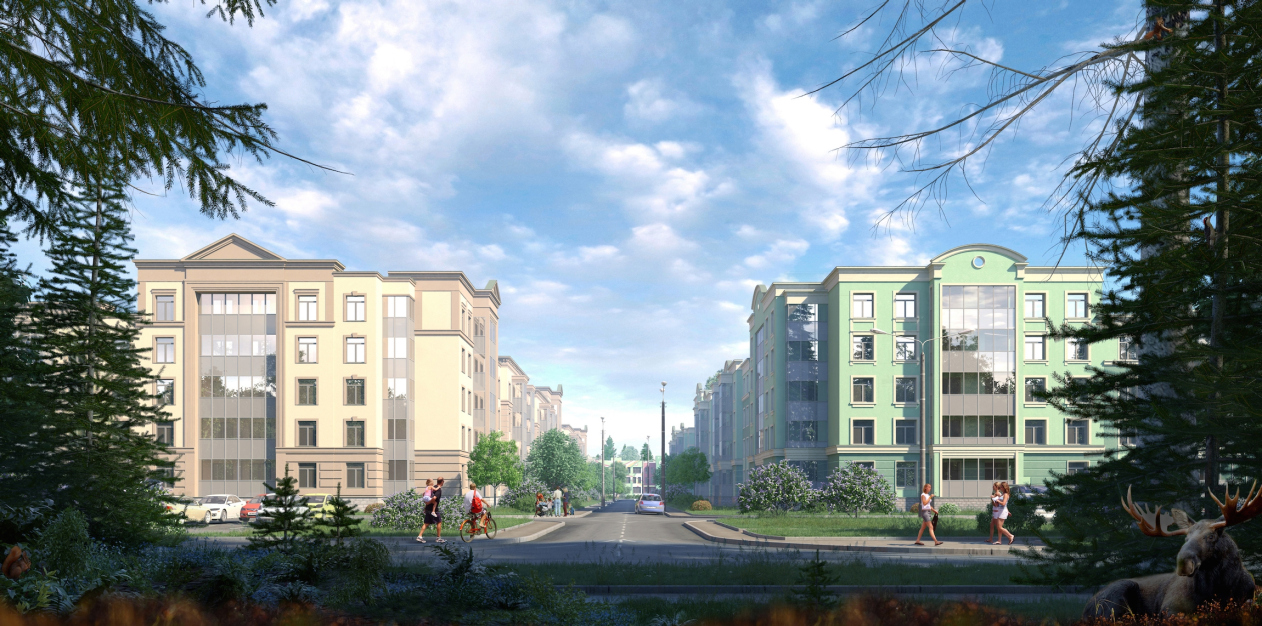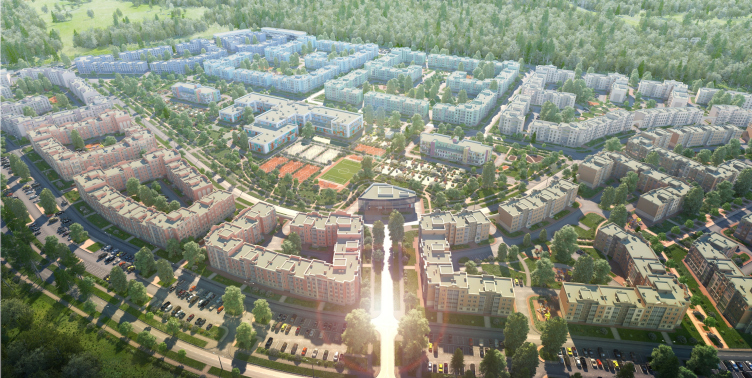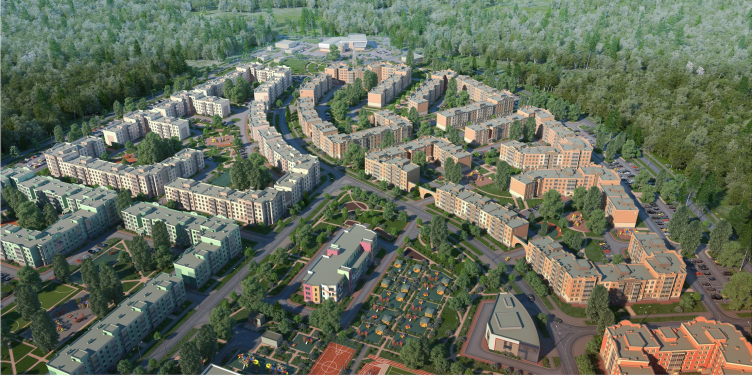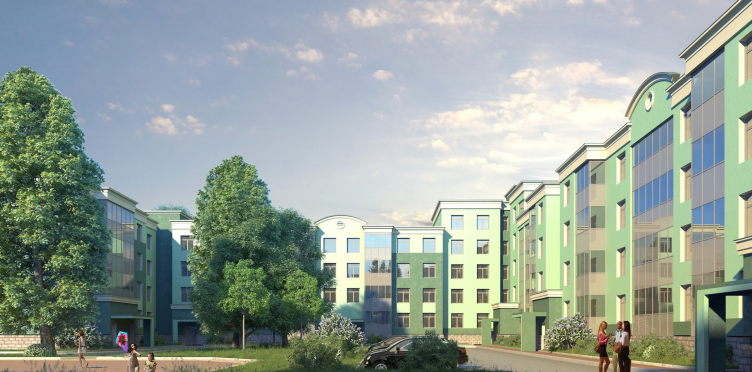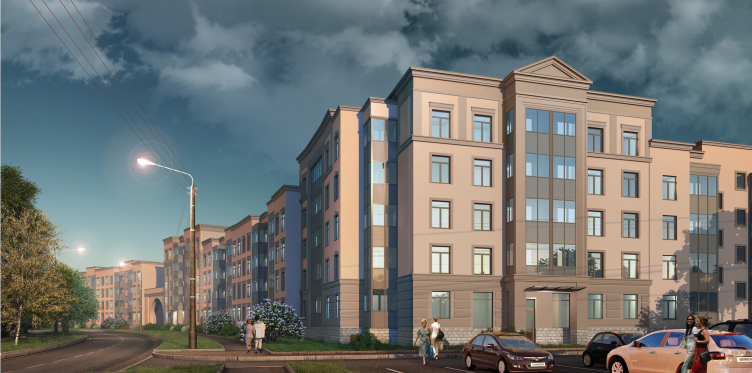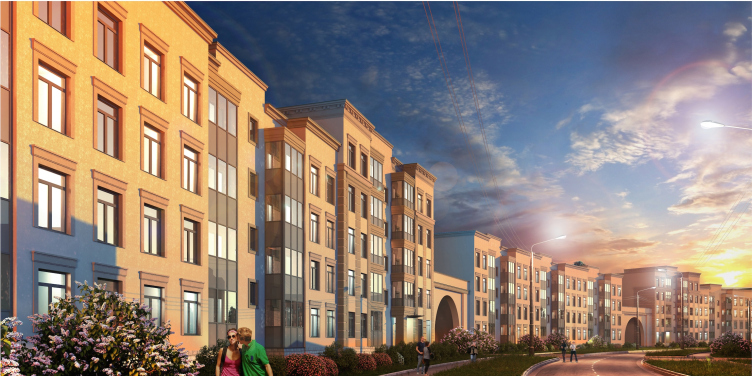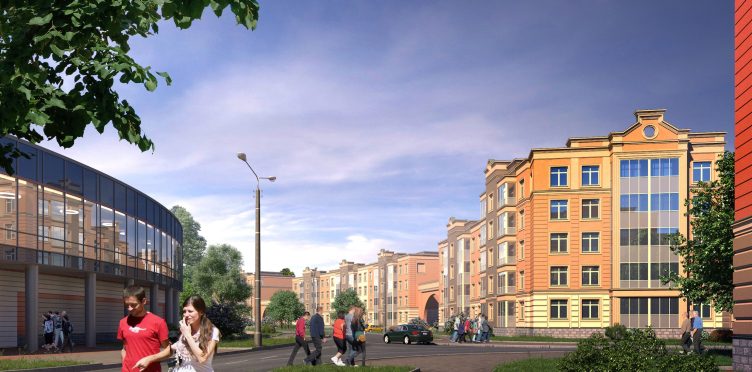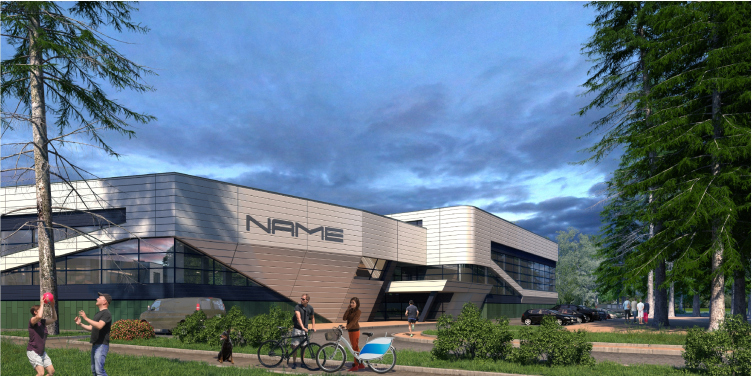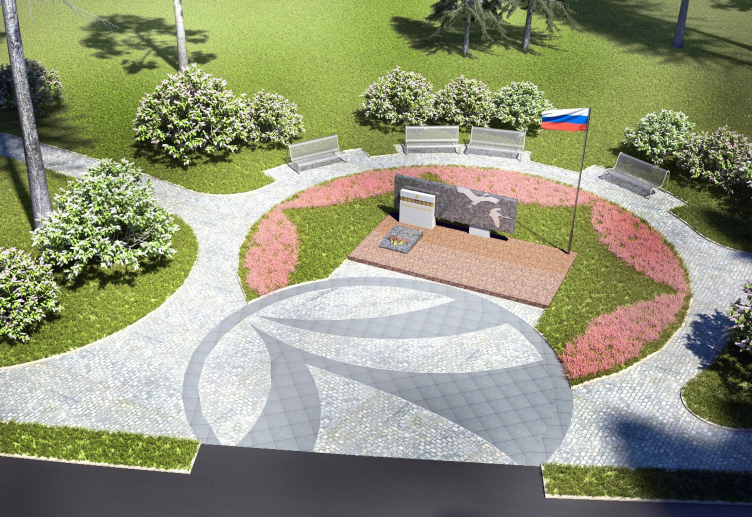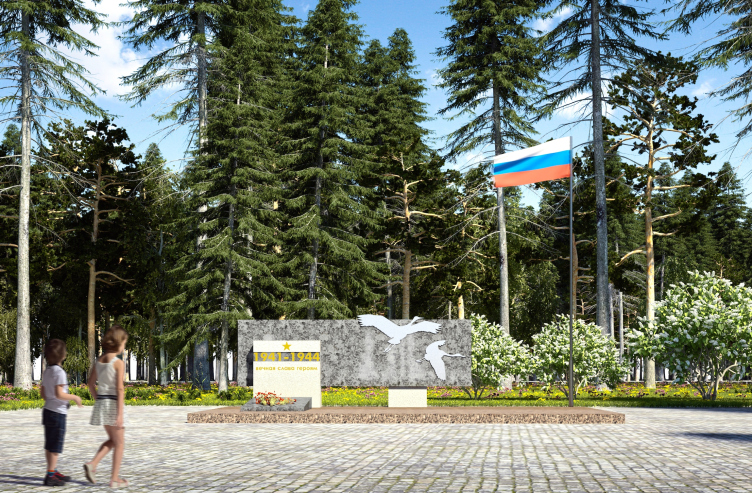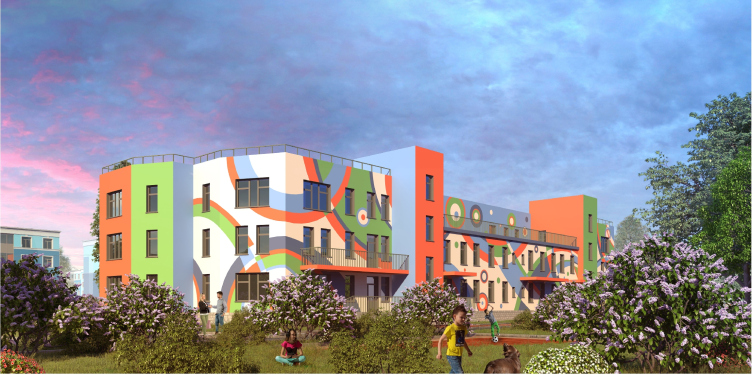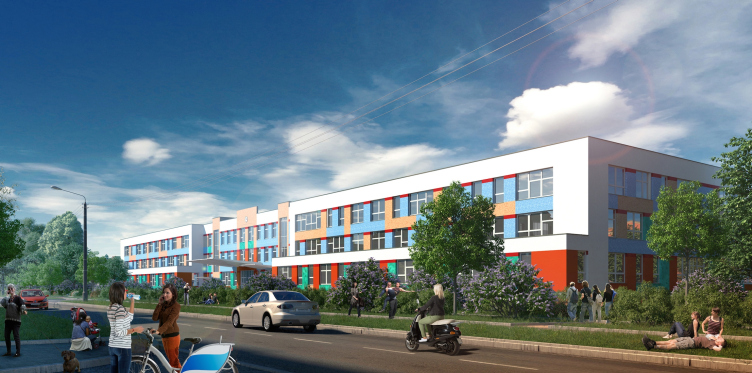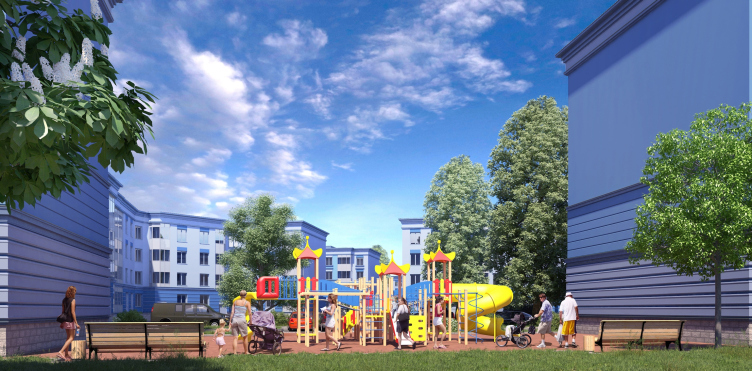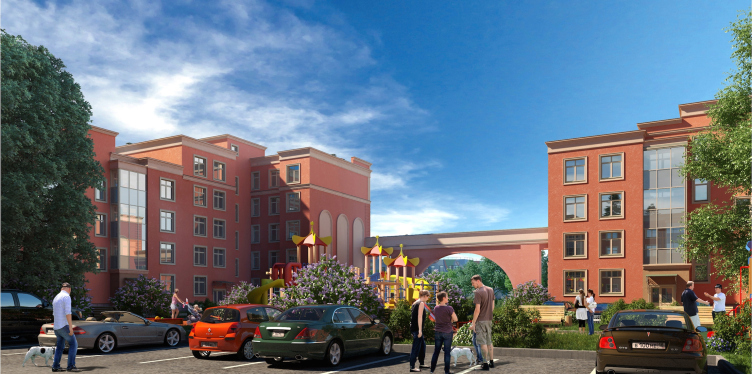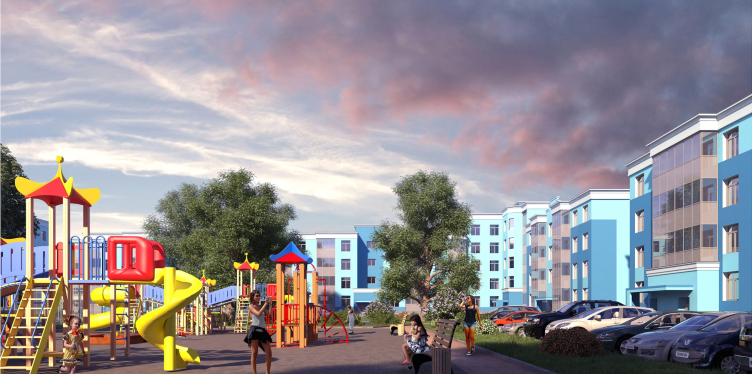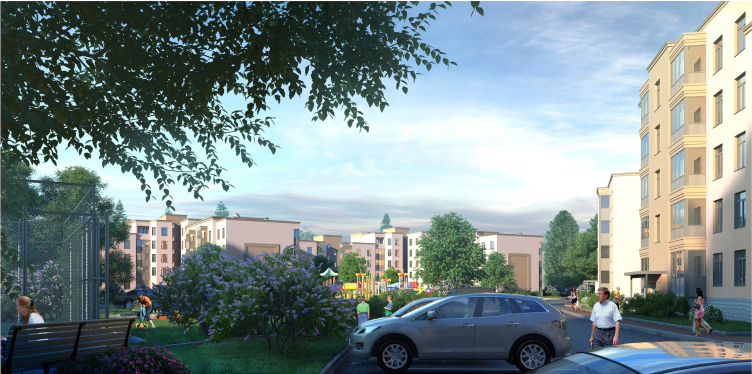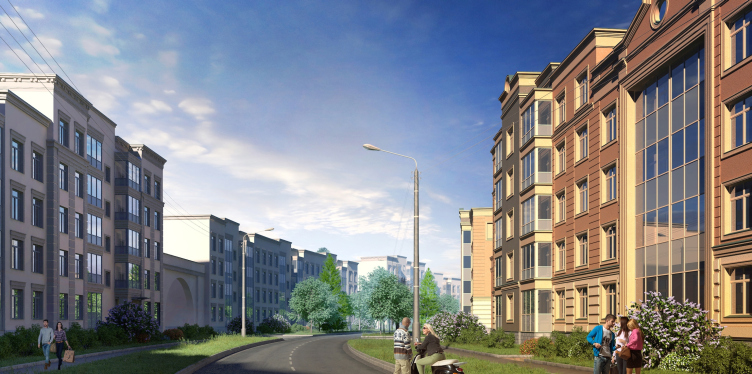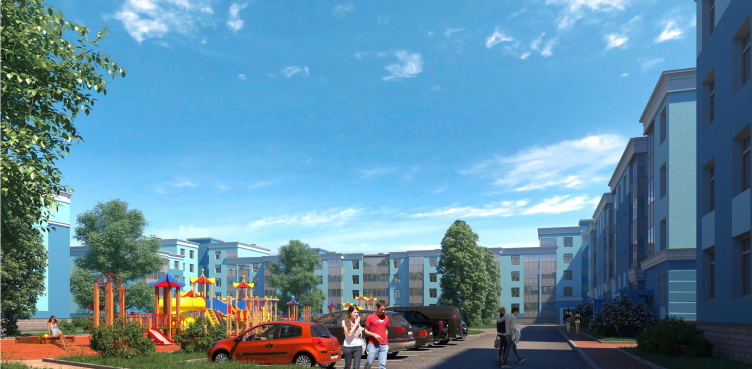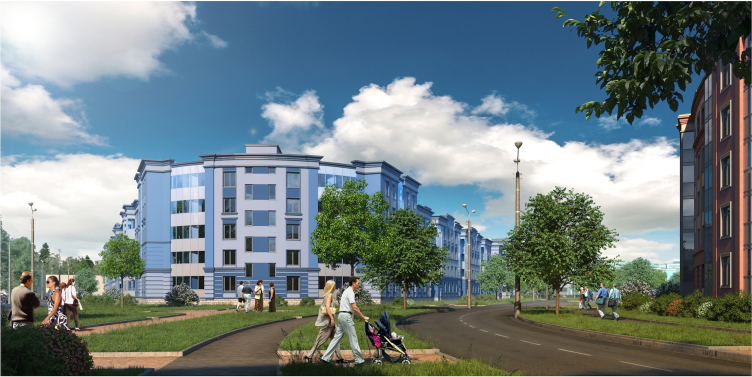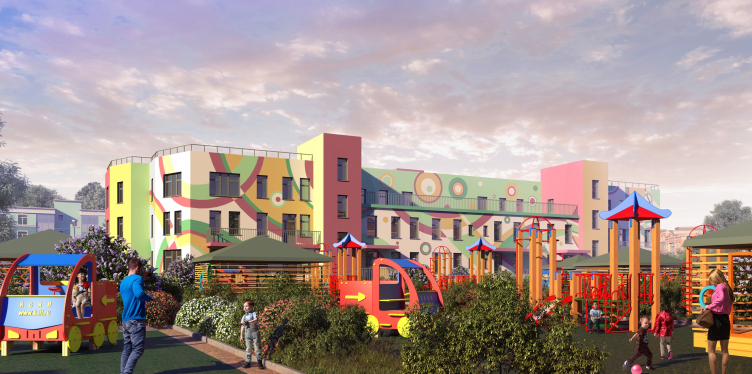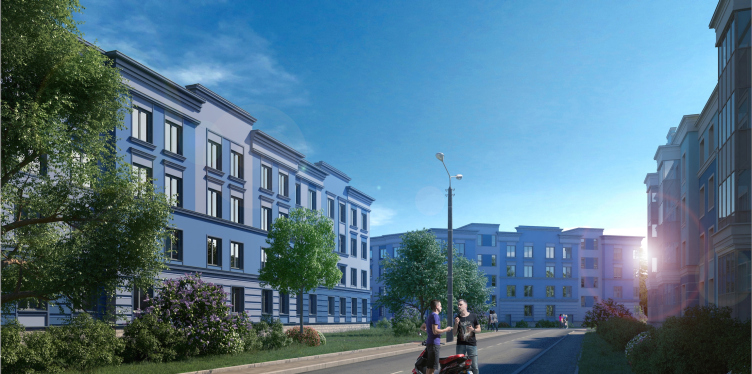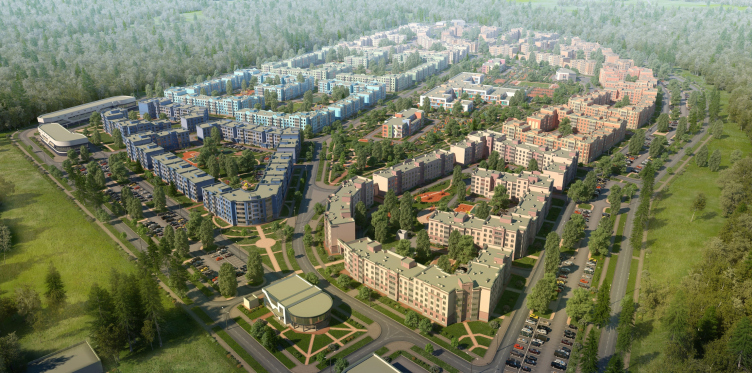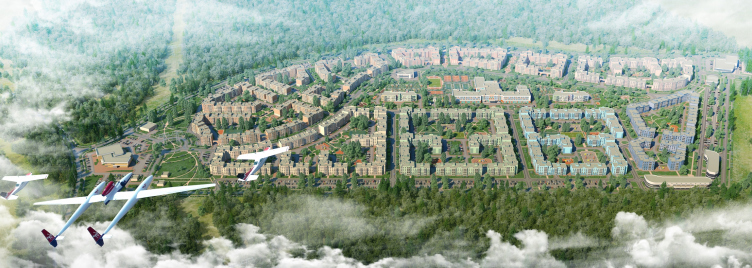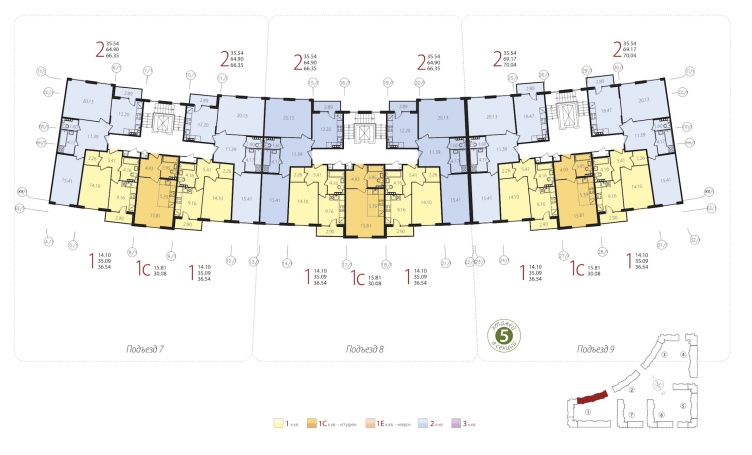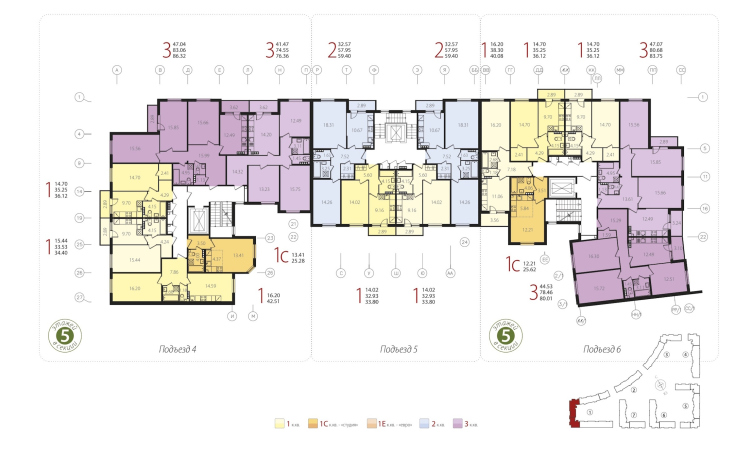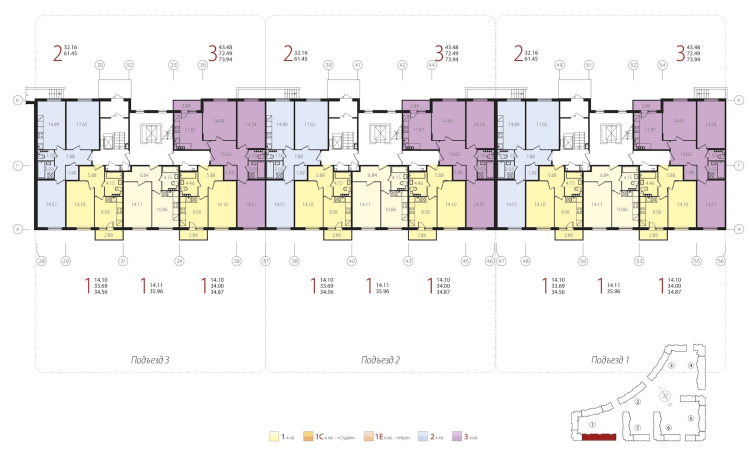“New Sertolovo” residential complex represents eight blocks of four- and five-storey houses grouped around the central park area. Although the complex is located within the boundaries of Sertolovo, its construction site is separated from the existing urban massive on all sides by forests and a field, which gives it a certain autonomy, both in the social and compositional ways. More than that, the investor promises to save about one third of the lot for soft landscaping, logically guided by the image of a garden-town with its harmony poising between the rural and the urban.
"New Sertolovo" residential complex. Project, 2015 © Sergey Tsytsin Architectural Studio
"New Sertolovo" residential complex. Bird's eye view. Project, 2015 © Sergey Tsytsin Architectural Studio
The micro-district will be provided with all the necessary infrastructure: this includes the two large “anchors” on both sides of the territory – a sporting complex and a shopping mall. In addition, there are two extra shopping centers inside the development, and also some shopping and service facilities on the ground floors of the houses. In the central part of the territory – right in the park area – there will be two kindergartens and a school. Both the master plan and the architecture of the complex were made by Sergey Tsytsin’s Studio. According to the shape of the land plot, some blocks have regular geometric contours, while others – curvy and picturesque. Smoothly bending lines of the central street unwind dynamic perspectives and connect the urban theme with variations of a natural landscape.
"New Sertolovo" residential complex. Bird's eye view. Project, 2015 © Sergey Tsytsin Architectural Studio
"New Sertolovo" residential complex. Bird's eye view. Project, 2015 © Sergey Tsytsin Architectural Studio
"New Sertolovo" residential complex. Bird's eye view. Project, 2015 © Sergey Tsytsin Architectural Studio
“Our task was to create a clear geometry of the streets and street-blocks reminding St. Petersburg, to return to the environment that was destroyed after Corbusier. It is important for an individual to feel the difference between the private, closed residential space of the territory inside the block, and the open area of the street, as a space of connections, communication, trade, movement etc. For the same purpose, the main part of the parking lots is planned to be located along the external streets in order to possibly minimize motor traffic inside of the block” – says Sergey Tsytsin.
Both the block planning principle and the style of the houses appeal to tradition. The facades are decorated with simply drawn attics, cornices, architrave, rustication joints along with glass inserts; these modern elements are not set against “classic”, but rather complete the general graphic structure adding the natural temporal marks to it.
"New Sertolovo" residential complex. Project, 2015 © Sergey Tsytsin Architectural Studio
"New Sertolovo" residential complex. Project, 2015 © Sergey Tsytsin Architectural Studio
"New Sertolovo" residential complex. Project, 2015 © Sergey Tsytsin Architectural Studio
"New Sertolovo" residential complex. Project, 2015 © Sergey Tsytsin Architectural Studio
There is not a single pair of repeating facades in the project. United by one framework of design, the houses yet differ in details, the slight step-back of the facades, height (variations in one floor, plus the crowning of the attics) and create a living silhouette and the unobtrusive variety typical for historical site development. Unfortunately, due to costs reasons, some large, emphatic accents have been removed from the project – such as the connecting arches between the houses.
"New Sertolovo" residential complex. Project, 2015 © Sergey Tsytsin Architectural Studio
Nevertheless, there is some stylistic contrast in the project. It lies in the solution of the public buildings: shopping and sporting facilities, kindergartens and schools. They show absolutely no historical reminiscences and bring the spirit of today into the tranquil idyll of the foresty suburb.
"New Sertolovo" residential complex. Project, 2015 © Sergey Tsytsin Architectural Studio
"New Sertolovo" residential complex. Project, 2015 © Sergey Tsytsin Architectural Studio
"New Sertolovo" residential complex. Project, 2015 © Sergey Tsytsin Architectural Studio
The whole picture reminds postwar towns and villages charged with the impulse of a “peaceful happy life” – only not in their original version, but with the latest modifications, that is – the way they look today.
Is this nostalgia? Perhaps. But since the image of “future” – the popular source of inspiration for the modern architecture – is becoming more frightful, and the present – evasive and unclear, the longing for tradition looks like a natural search of a toehold. Another sign of such rootedness in the past – is the new monument to the soldiers who died in this region during the years of World War II. Laconic and appealing to late Soviet stylistics, it presents a contrast of a massive concrete block and the light silhouette of flying cranes.
"New Sertolovo" residential complex. Monument to the Heroes Project, 2015 © Sergey Tsytsin Architectural Studio
"New Sertolovo" residential complex. Monument to the Heroes Project, 2015 © Sergey Tsytsin Architectural Studio
As we can see, the authors found different ways to combine the old and the new, without any certain time reference. This allows to avoid the impression of a museum or stage decorations.
The project took the second place in the regional tender for urban land development. The complex will be equipped with comfortable public and inner-block areas with pedestrian paths, dooryards and benches. Besides that, the authors decided to give some personality to different zones of the residential complex by compositions of giant natural stones extracted during excavation, and also the landscape sculptures of different forest animals. Hopefully, thanks to moving the parking lots out on the external perimeter and construction of underground and surface garages, cars will not crowd out the people out of this comfortable space. Sadly, the beautiful dream of a garden-city as a self-sufficient organism remains a utopia: most of the residents will still have to go to work outside of the new residential complex – to old Sertolovo and, of course, St. Petersburg. Connection between the complex and the outer world is provided with Vyborgskoye Shosse crossing Sertolovo and the Ring Road. In case there are no traffic jams, one can get to the Prospekt Prosvyasheniya metro station in 15 minutes by public transport.
The project of New Sertolovo seems to be a sound alternative to the high-rise volumes that have tightly surrounded the town in the recent years. It is founded on the intention to restore the qualities of a residential environment lost in modernism on a new level, make it self-sufficient, comfortable, differentiated, successive, understandable, giving a feeling of stability and reflecting the beauty of classic.
"New Sertolovo" residential complex. Project, 2015 © Sergey Tsytsin Architectural Studio
"New Sertolovo" residential complex. Project, 2015 © Sergey Tsytsin Architectural Studio
"New Sertolovo" residential complex. Project, 2015 © Sergey Tsytsin Architectural Studio
"New Sertolovo" residential complex. Project, 2015 © Sergey Tsytsin Architectural Studio
"New Sertolovo" residential complex. Project, 2015 © Sergey Tsytsin Architectural Studio
"New Sertolovo" residential complex. Project, 2015 © Sergey Tsytsin Architectural Studio
"New Sertolovo" residential complex. Project, 2015 © Sergey Tsytsin Architectural Studio
"New Sertolovo" residential complex. Project, 2015 © Sergey Tsytsin Architectural Studio
"New Sertolovo" residential complex. Project, 2015 © Sergey Tsytsin Architectural Studio
"New Sertolovo" residential complex. Project, 2015 © Sergey Tsytsin Architectural Studio
"New Sertolovo" residential complex. Project, 2015 © Sergey Tsytsin Architectural Studio
"New Sertolovo" residential complex. Project, 2015 © Sergey Tsytsin Architectural Studio
"New Sertolovo" residential complex. Project, 2015 © Sergey Tsytsin Architectural Studio
"New Sertolovo" residential complex. Project, 2015 © Sergey Tsytsin Architectural Studio
"New Sertolovo" residential complex. Project, 2015 © Sergey Tsytsin Architectural Studio
"New Sertolovo" residential complex. Bird's eye view. Project, 2015 © Sergey Tsytsin Architectural Studio
"New Sertolovo" residential complex. Bird's eye view. Project, 2015 © Sergey Tsytsin Architectural Studio
"New Sertolovo" residential complex. Plan of the typical floor. Project, 2015 © Sergey Tsytsin Architectural Studio
"New Sertolovo" residential complex. Plan of the typical floor (Unit 1). Project, 2015 © Sergey Tsytsin Architectural Studio
"New Sertolovo" residential complex. Plan of the first floor (Unit 1). Project, 2015 © Sergey Tsytsin Architectural Studio
